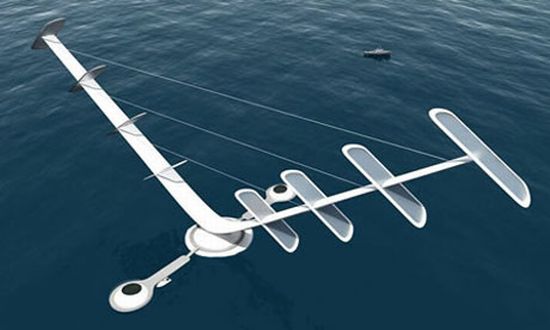
Wind Energy has often been touted as one of the most reliable sources of renewable energy. Efforts to harness this awesome power of nature commenced during the primordial age when Persians built the world’s first windmills. The designs of wind turbines evolved over the years, resulting in a standard 3-blade horizontal-axis design which did promise a high level of efficiency. Though efficient, this design was often criticized as a bird-killing machine. The recent focus on sustainability and energy-efficiency encouraged designers to develop unconventional wind turbines, which not only proved to be a boon for the environment but for the ecosystem as well. Here is a list of 15 such wind turbine designs that proved the conventions wrong.
Democratic Ecology personal wind turbine: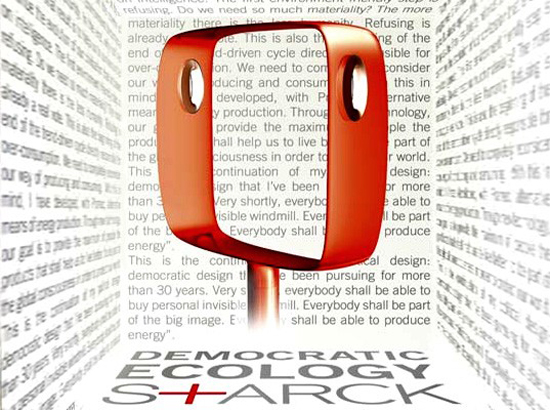
Designed by French designer Philippe P. Starck, the “Democratic Ecology” personal wind turbine provides 20% to 60% of home energy needs. The turbine is priced at €400 (roughly $600) and you’ll probably need more than one to support your entire household, but this nifty gadget seems well worth it.
Storan’s Turbine: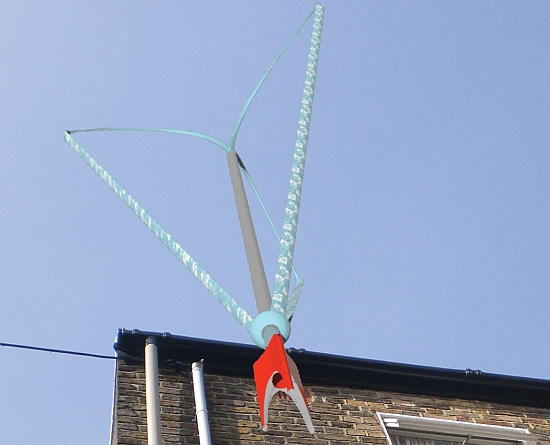
Designed by Industrial Design Engineering graduate Ben Storan, the vertically rotating turbine is claimed to produce 1.2kW, which is three times more than the output of conventional windmill-type generators. With a height of 4 meters and a weight of 30 kg, the Storan’s wind turbine generates more energy as compared to the same-sized domestic wind turbines that produce 1kW at a wind speed of 12 m/s.
Sky Serpent: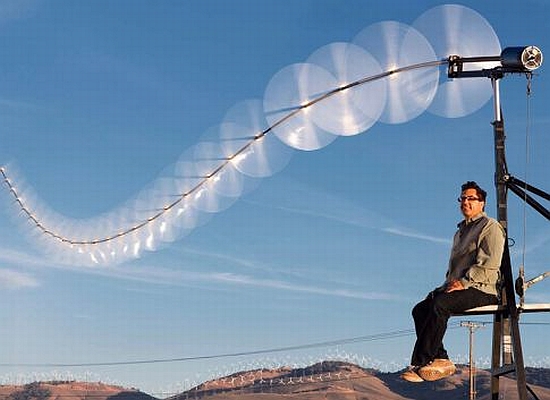
Doug Selsam’s Sky Serpent uses an array of small rotors to catch more wind for less money. The key to increasing efficiency is to make sure each rotor catches its own fresh flow of wind and not just the wake from the one next to it, as previous multi-rotor turbines have done. That requires figuring out the optimal angle for the shaft in relation to the wind and the ideal spacing between the rotors. The payoff is machines that use one tenth the blade material of today’s megaturbines yet produce the same wattage.
Helical wind turbine: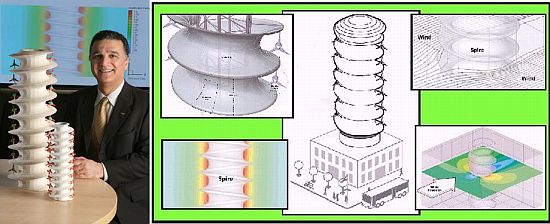
Designed by a professor at Cleveland State University, Dr. Majid Rashidi, the Helical Wind Turbine design is based on a silo-shaped wind deflector that can be mounted atop any city building. The design includes multiple mini-turbines on each of its spires that can generate electrical power at very low wind speeds. The system has a claimed power generation ratio of 4:1, enabling the system to sustain its own energy needs apart from powering homes, offices or schools.
Asia Alliance Base’s space age wind turbines: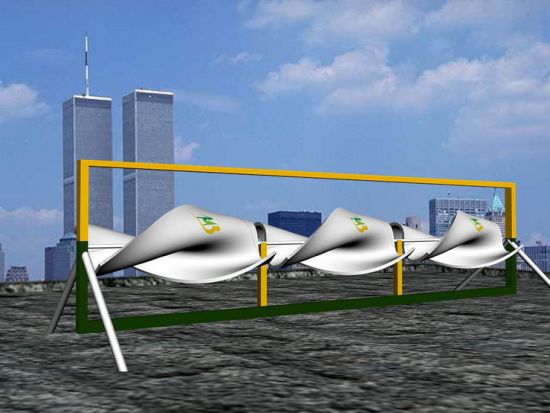
These futuristic helical structures are the future of windmill technology, or so claim the makers. These amazingly unique looking twists and turns will replace those long and boring blades which represent the conventional image of a windmill. These new and sleek looking windmills are designed much like the old ones when it comes to converting their circular motion in to mechanical work, but it is the structural design that makes them unique and special. In fact, they logically should function better than the traditional windmills as the helical structures seems to not just utilize the energy of the wind, but maximize it by containing the wind.
Mariah Power’s Windspire: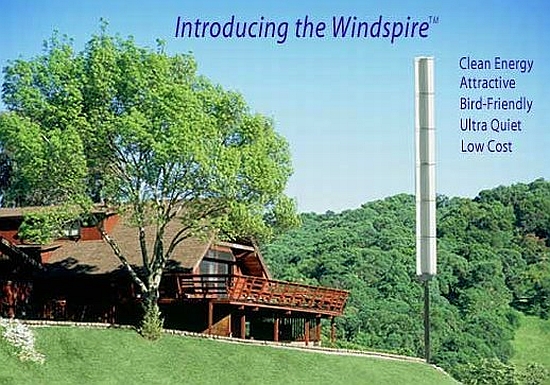
Windspire is a propeller-free design that rises 30 feet into the air and is just 2 feet wide. The design is quiet and also completely safe for birds. This propeller-free 1KW Windspire promises to produce 1,900 KW Hours annually if winds average 12 mph. Mariah Power has also claimed that the installation is as easy as it can be and the design does not require frequent maintenance.
Helix Wind’s Savonious Turbine:
The vertical Savonious 2.0 and Savonious 5.0 have a unique patent pending design which empowers the turbine to convert wind power into energy in less than 5 decibels above the background noise. The noise that the turbine makes is similar to the noise generated when wind passes through a tree or a house. The turbines are capable of generating 2KW and 5KW of green electricity respectively.
Magnetic Levitation wind-turbine: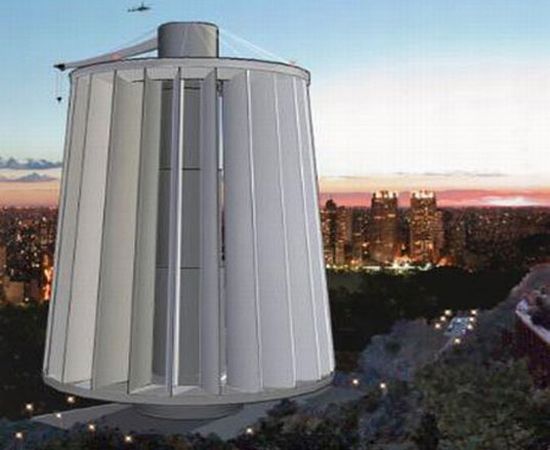
The Magnetic Levitation wind-turbine is designed by a new Arizona-based company that aims to produce a gigawatt of clean energy (enough to power 750,000 homes), at a cost of about one cent per kilowatt an hour estimate, in comparison to the present day large wind turbines that produce 5 megawatts of power. It is an amazingly huge structure with a roughly estimated footprint of 100 acres, while several hundred meters in height.
Highway Mounted Wind Turbine: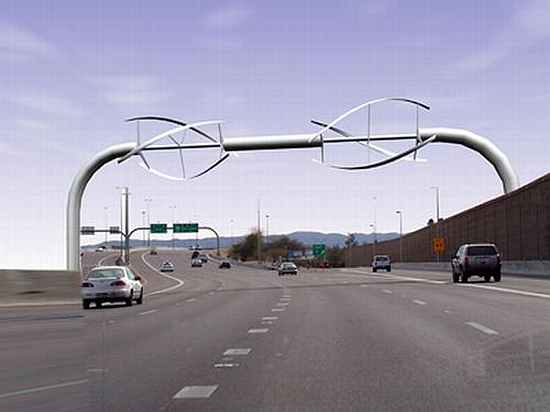
Shaped like an axis, the wind turbines would be powered by the whooshing of the wind caused by the passing vehicles rushing at the average speed of 70 mph. Each single wind turbine will be able to produce 9600 KWh of energy annually, even if the average wind speed is kept at a minimum of 10 mph. This energy is sufficient to light up a 700-sq-ft apartment.
Wind Belt: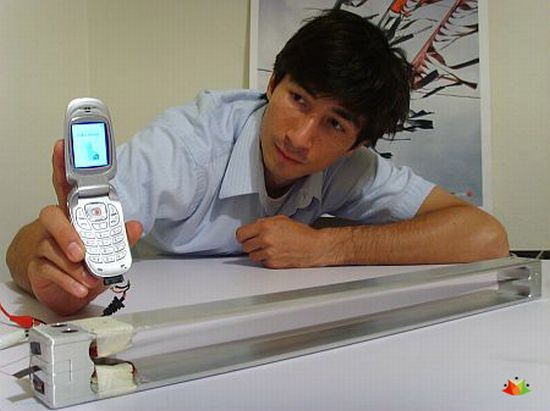
Shawn Frayne, a 28 year old inventor based in Mountain View, California, is the brain behind the “wind belt,” which uses the wind energy to light up LED lamps and power radios in developing nations. The wind belt can harness and produce much more energy and much more effectively than a conventional wind turbine can. “With rotary power, there’s nothing out there that generates under 50 watts,” Frayne says. This makes it 10 to 30 times as efficient as the best microturbine.
Aerogenerator Wind Turbine: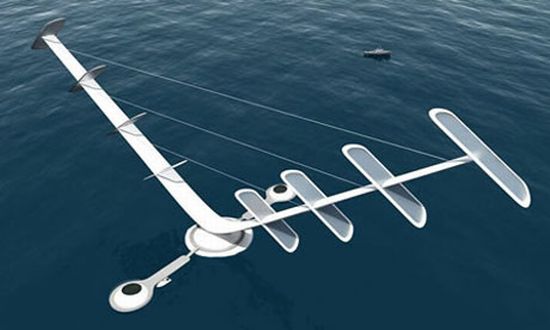
The V-shaped turbine is modeled on the lines of conventional turbines, however, with a sting of advancing technology. The difference between the conventional windmills and aerogenerator is that the later generates power through a rotating vertical shaft, while the horizontal shafts form an important part of the former.
Magenn Air Rotor System:
MARS (Magenn Air Rotor System) is a lighter-than-air tethered wind turbine that rotates about a horizontal axis in response to wind, generating electrical energy. This electrical energy is transferred down the 1000-foot tether for immediate use, or to a set of batteries for later use, or to the power grid. Helium sustains MARS and allows it to ascend to a higher altitude than traditional wind turbines. MARS captures the energy available in the 600- to 1000-foot low level and nocturnal jet streams that exist almost everywhere.
Kite Wind Turbine: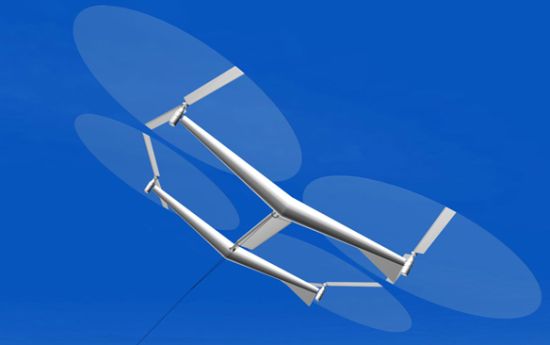
These helicopter-styled wind turbines sport giant rotating blades that initially lift it to the best possible height for generation of wind energy. Then, they work as giant floating turbines and shift to energy production mode. Estimates show that energy from the farms of such turbines at high altitude would be enough to run the entire planet on clean wind energy.
FloDesign Jet-inspired wind turbine:
FloDesign Wind Turbine has developed a new turbine design that could generate electricity at half the cost of conventional wind turbines. The design has been inspired from jet engines and avoids the wind losses associated with wind turbines. Normally, when wind strikes a turbine, about half of the wind is forced around the blades and the other half is used in electricity generation.
Darrieus wind turbine: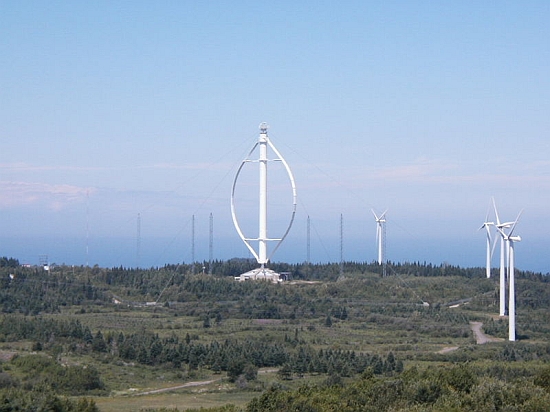
The turbine consists of a number of aerofoils vertically mounted on a rotating shaft or framework. The Darrieus type is theoretically just as efficient as the propeller type if wind speed is constant, but in practice this efficiency is rarely realized due to the physical stresses and limitations imposed by a practical design and wind speed variation. There are also major difficulties in protecting the Darrieus turbine from extreme wind conditions and in making it self-starting.




